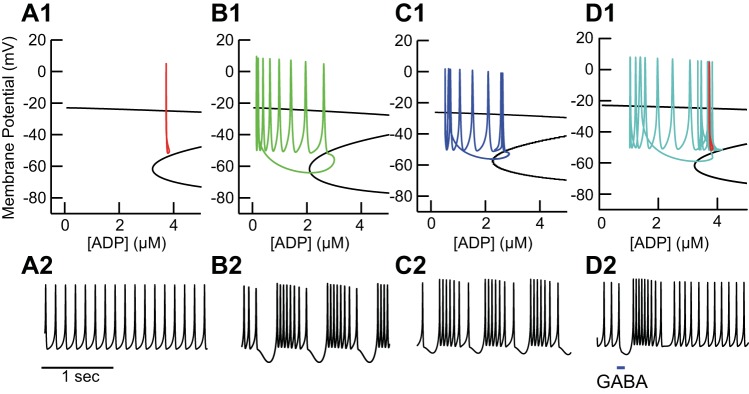Fig. 7.
Distinct dynamic mechanisms for single spiking and bursting. Top: projection of the voltage nullcline from Fig. 6A unto the voltage/ADP plane in the same manner as in Fig. 6D. Bottom: voltage traces. A: in the absence of NN414, the tonic spiking trajectory (A1) from Fig. 5A does not interact with the middle branch of the voltage nullcline (dV/dADP = 0, black), enabling pacemaking (A2). B: addition of NN414 shifts the voltage nullcline left to lower ADP values, forcing a crossing that destabilizes the tonic mode (B1), resulting in bursting (B2). C: addition of a tonic GABAergic (10 μS/cm2) conductance causes a leftward shift in the voltage nullcline (C1) similar to NN414, allowing for stable bursting (C2). D: hyperpolarization due to a single simulated GABAergic IPSP can lead to a rebound burst (D2) because the hyperpolarization causes a crossing of the unstable middle branch in a downward direction (D1) and a period of quiescence.

